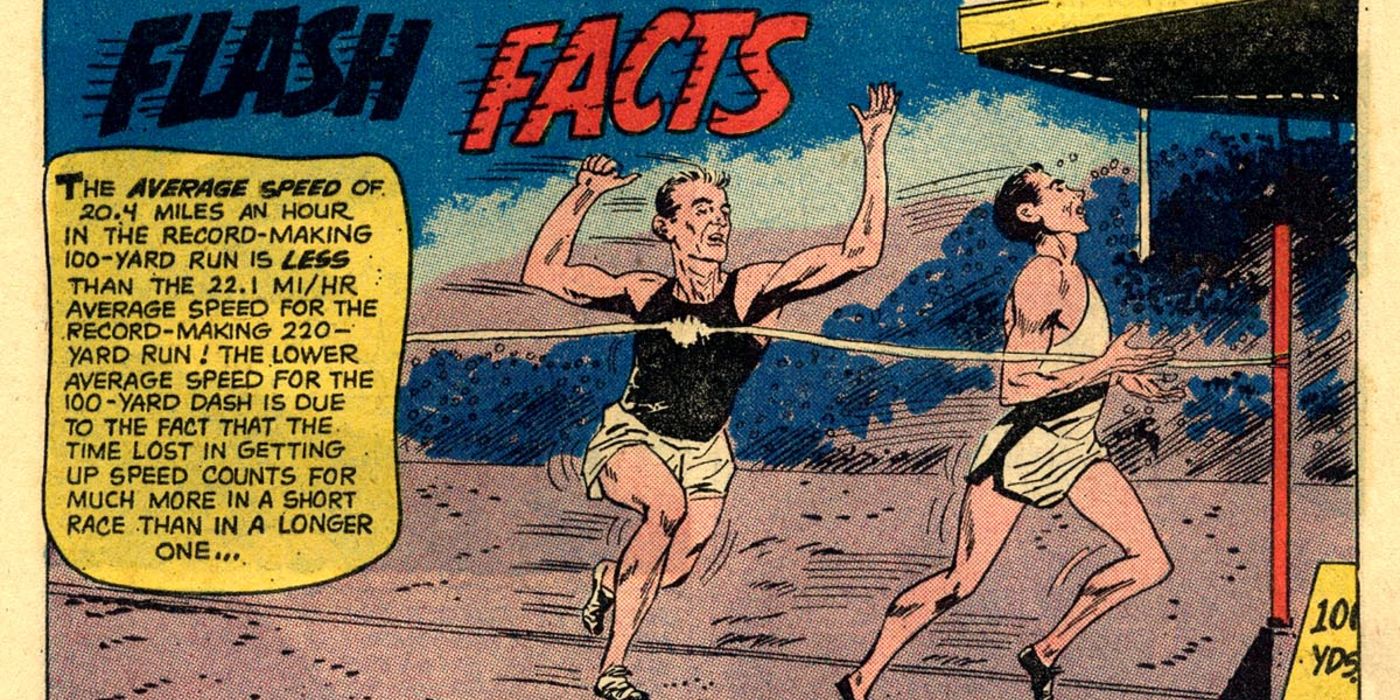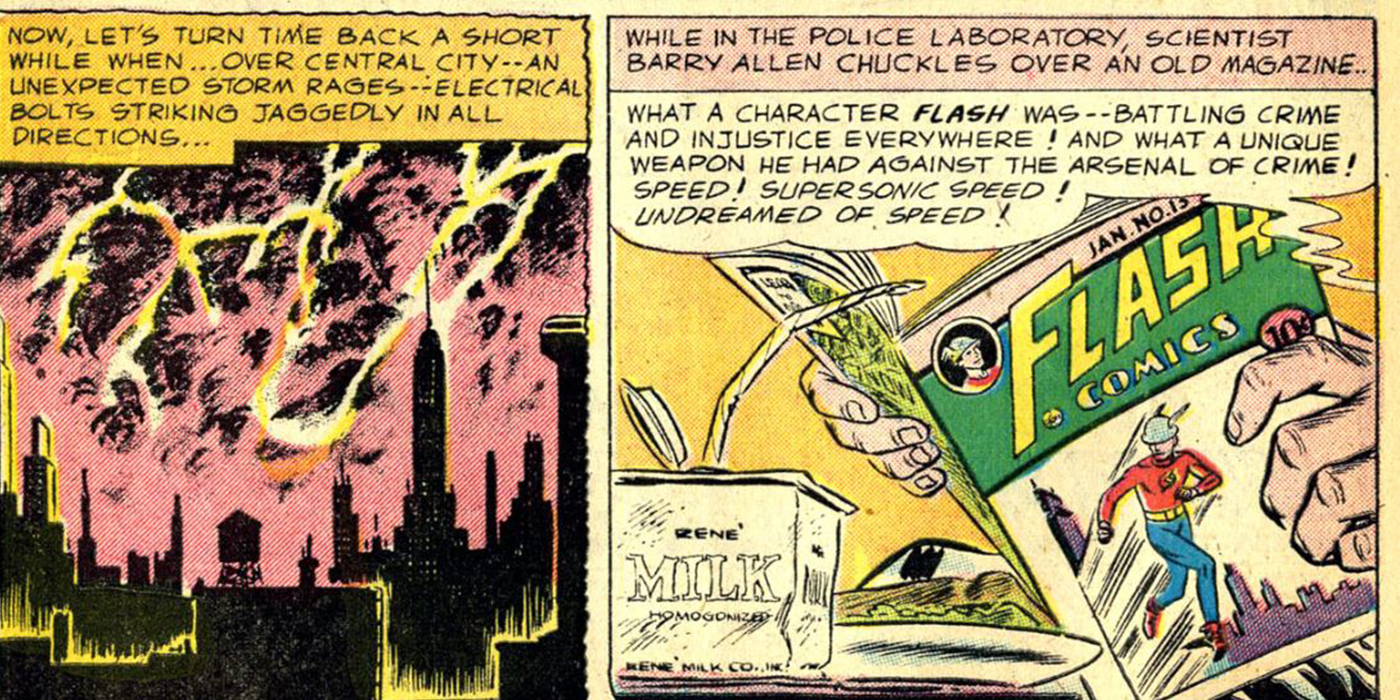Thanks to the popularity of The Flash TV series, even casual fans of the Scarlet Speedster know that he gets his power from the Speed Force, an extra-dimensional power of nature. So, because all the speed-based heroes of the DC Multiverse aren’t merely fast but actually drawing on this unique force, they get more than just speed. There's a shortlist of powers that have been added in the comics pages to allow them to use that speed without getting friction burns over 90% of their body, for example. Tapping into the Speed Force doesn’t just make you faster, it makes you almost as fast as light travels and it makes your body and brain capable of handling that speed.
So there have been no shortage of awesome, silly, badass, or terrible powers attributed to the super-speedsters in DC’s comics over the years since Jay Garrick was introduced in Flash Comics #1 in late 1939. Speed-breath and speed-thinking and mini-whirlwinds and time-travel and so on, usually brought in to specifically counter the abilities of a new villain. In at least one late Silver Age story from 1972, Barry Allen successfully deflects sound-waves away from himself.
In "The Flash of a 1000 Faces" in August 1972's The Flash #218, Barry can see ahead of him that people are acting strangely and has a “hunch” they are being hypnotized by the set of bagpipes being played nearby and that the criminal genius the Pied Piper is to blame. The human brain does always receive signals of light through our optic nerve first before signals of sound reach it through the cochlear fibers in our vestibulocochlear nerve. It seems like they could be equally fast but remember that light is faster than sound so indeed moving along at super-speed or not Barry would see all this before hearing anything, technically we do too. That’s why you can tell how far a lightning strike is from you by counting the seconds between when you see the flash and when you hear the thunder. Running around the Piper somehow deflects the sound-waves, causing him to literally not hear the sound they carried and be unaffected by them. So why would writer Cary Bates or artists Irv Novick and Frank McLaughlin do this? And why did editor Julius Schwartz let them get away with this for What were they thinking? That’s not possible. Or is it?
How it Works!
Remember being a kid and playing in the swimming pool with a friend? Seeing if you could hear each other under the water? You can hear things underwater but it’s extremely muffled like it’s been put through autotune backwards. But sound-waves do travel through water otherwise you wouldn’t be able to hear anything at all. Keep in mind too, that a superhero like Barry Allen isn’t just really, really fast – he has a direct line to the Speed Force itself. That means he can move at almost the speed light and light moves at 670,616,629 miles-per-hour. That’s in the hundreds-of-millions, in case you didn’t catch that. Sound, by comparison, is quite the slouch: sound can only move at a mere 767 miles-per-hour.
If we lived permanently underwater (like Aquaman, Namor, or Ariel) we’d probably have also evolved some adaptations to hear more clearly through the water instead of air around us. It’s difficult to perceive it but just as the ocean floor is a floor and the ocean water sits above it full of particles, the bare ground is a floor and the air we breathe and walkthrough is full of particles as well. There’s far less H2O and far more CO2 but it is technically still just particles floating along, a medium for things to vibrate through. Waves are a formation of particles, again, whether the particles are floating through the water or floating through the air. In fact, more often than not, the waves are made of water and air, there’s a bit of oxygen in the ocean and a bit of water in the atmosphere. Particles are physical so they do have an absolutely tiny, tiny, amount of mass. Remember also in a swimming pool splash fight, if you splashed enough water off the surface at someone at just the right time? You can negate the wave getting splashed at you.
So if we understand that sound is made of waves and waves are made of particles and particles have some mass, we can see that sound does have a physical component. It's what physicists call a mechanical wave, a wave made of something physical, and anything physical can push and be pushed back in the opposite direction, if you could muster enough force... and enough speed. The Flash can move even faster than light when pushing himself to the limit and he can hit just under light-speed without breaking a sweat, which would already be many hundreds of thousands of times the speed of sound. A trained physicist might take issue with some of this but the goofy brand new Silver Age superpower Cary Bates came up with in 1972 just for Flash #218 does stand on solid science-fictional grounds.
Bottom line? Super-speed can beat most things! And if you’re talking light-speed? Well then, you even beat the speed of sound. You just have to apply that speed in the right place and at the right time. As anybody who has used power tools can attest, never underestimate the abilities of small mass applied at perfect precision, under great speed.
The Silver Age of Superhero Comics is called that because it came second but also because it had a playful shine and a joy to it. Even still, in its exuberance, some titles like The Flash under Julius Schwartz actually made efforts to teach some science to the children they were economically forced to aim their content at. This story from The Flash #218, "The Flash of a 1000 Faces" has some science grounding it. Some Silver Age comic-books are not as goofy as they appear on the surface.



